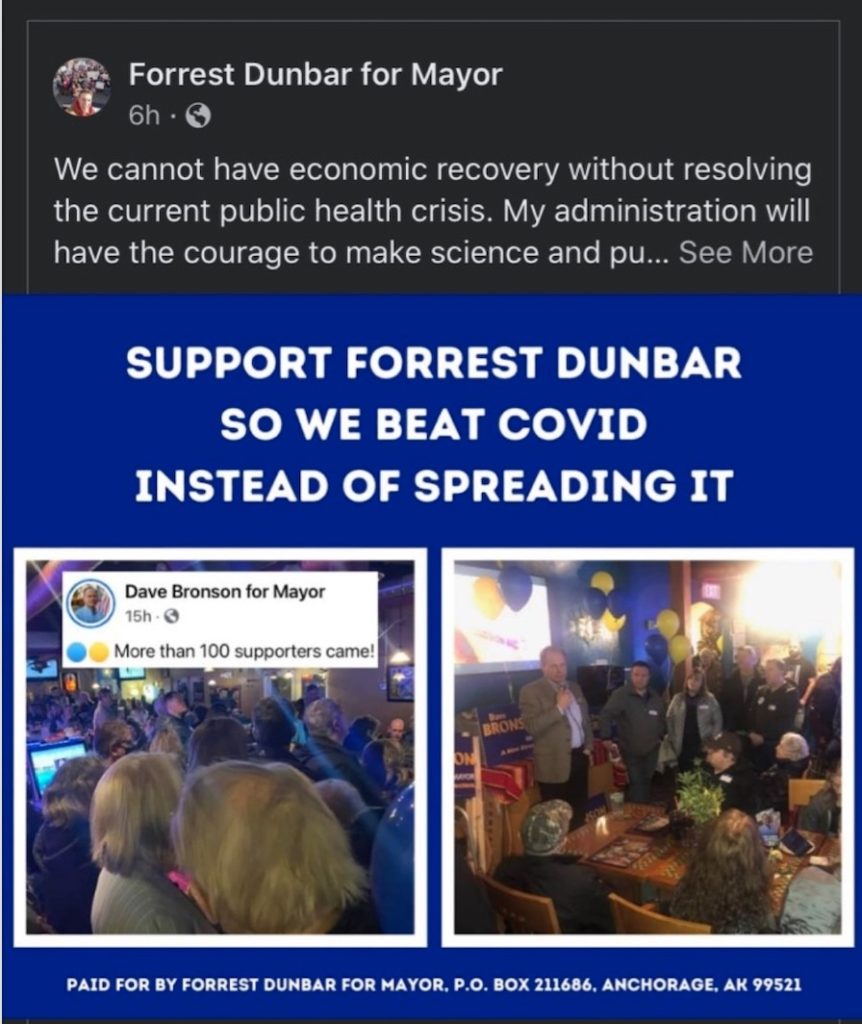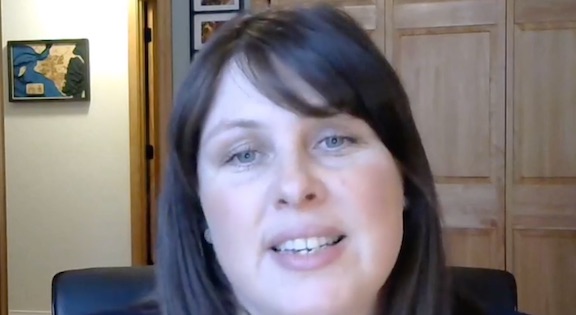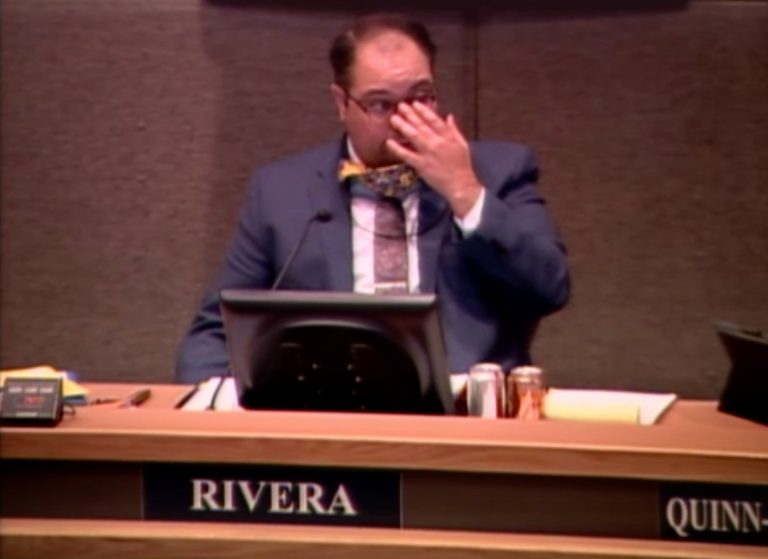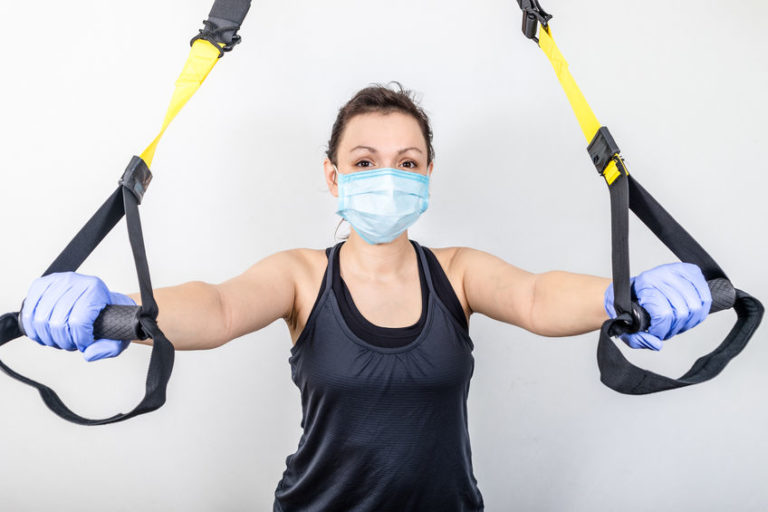Anchorage COVID code enforcers hired by Acting Mayor Austin Quinn-Davidson have started harassing the Dave Bronson for Mayor campaign, to the point where the campaign has had to cancel one of its fundraisers and take its future events “underground.”
Code enforcers made a surprise visit to the venue of a planned fundraiser for Bronson last week, frightening the owner of the restaurant, measuring table distances, checking masks, and sanitation, and telling the manager they would be back to see how the fundraiser was complying with the mayor’s orders of 50 percent capacity for indoor events. The restaurant owner decided to cancel the event rather than risk being shut down.
This is what happens when more than 100 people attend your campaign event in Anchorage under the current regime — at least if you are conservative.
Emergency Order 17 was supposed to be an “easing up” and has language specifically protecting worship services and political expression, both of which are protected by the U.S. Constitution.
Assemblyman Forrest Dunbar, the Democrat lead candidate, posted a message on Facebook with photos of Bronson’s events, calling it a super-spreader event.

Bronson’s campaign manager, Bernadette Wilson, said she has had to remove all of the photos from Facebook of recent events for the Bronson campaign, because the code enforcers are harassing the venues for the past events as well. She has received calls from code enforcers from the municipality.
What’s worse, is that some on social media have been attacking the business establishments that have provided venues to Bronson. The businesses noticed they were being bullied online, and that their ratings went down to “one star” reviews overnight from online political activists.
Bronson has had several large events, the most recent attracting about 100 people. He is believed to have raised the most money so far of any of the conservative candidates for mayor.
Some people wear masks during his events, while others do not, and Bronson has taken the position that people should do what they feel comfortable doing. Bronson has also had an online telethon fundraiser, for those who don’t feel comfortable coming to events.
Cale Green, campaign manager for Bill Evans for Mayor, says that for their headquarter grand opening event next week, they’ll have fire pits outside, so they can split the event between inside and outside at the old Sullivan for Senate headquarters, 5011 Spenard Road. They’ll be aiming for 50 percent capacity and have been flying under the radar of the code enforcers, with a strategy of following the municipal code as much as possible. Their event is from 5:30-7 pm on Thursday.







